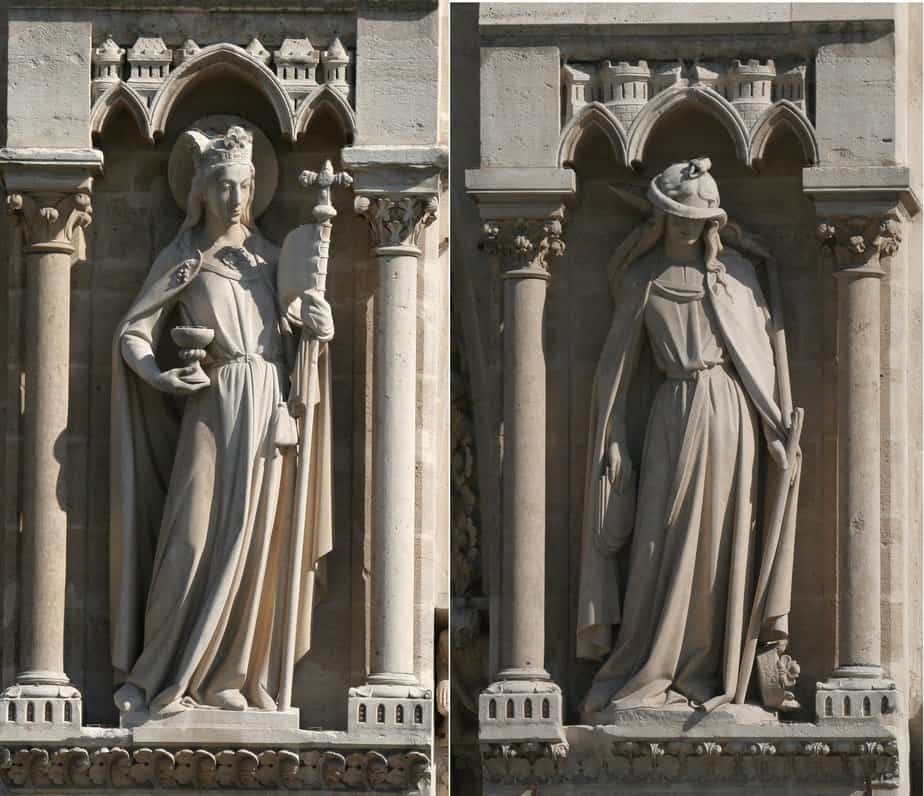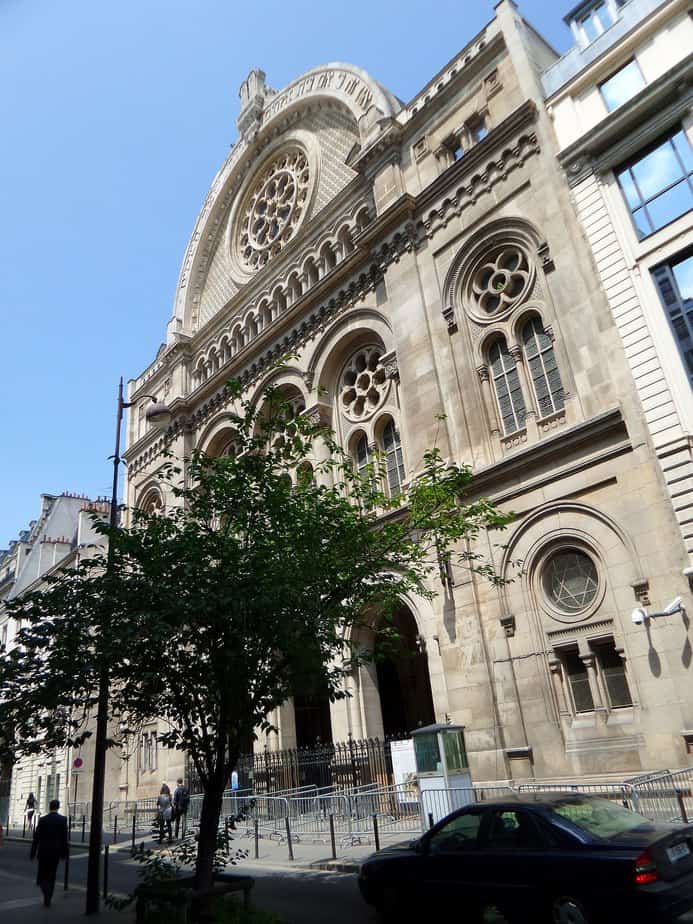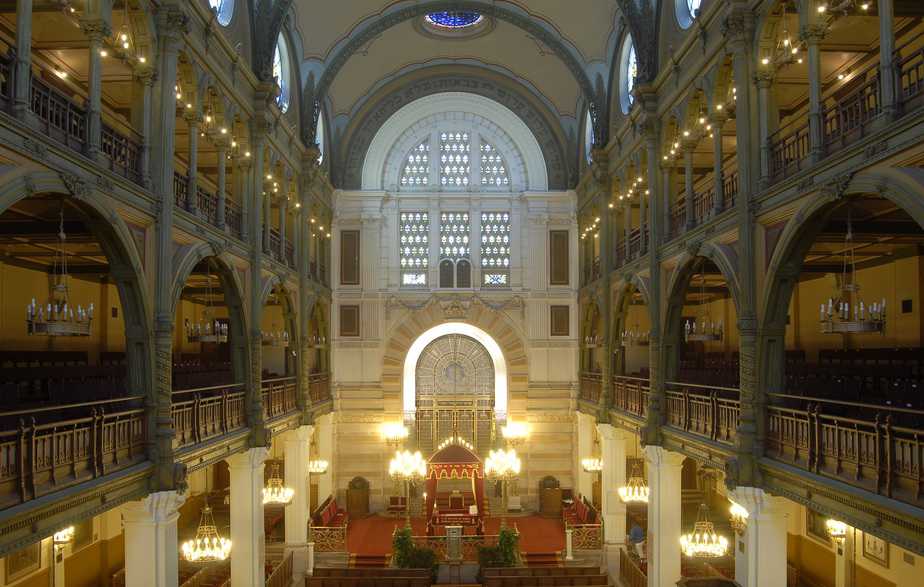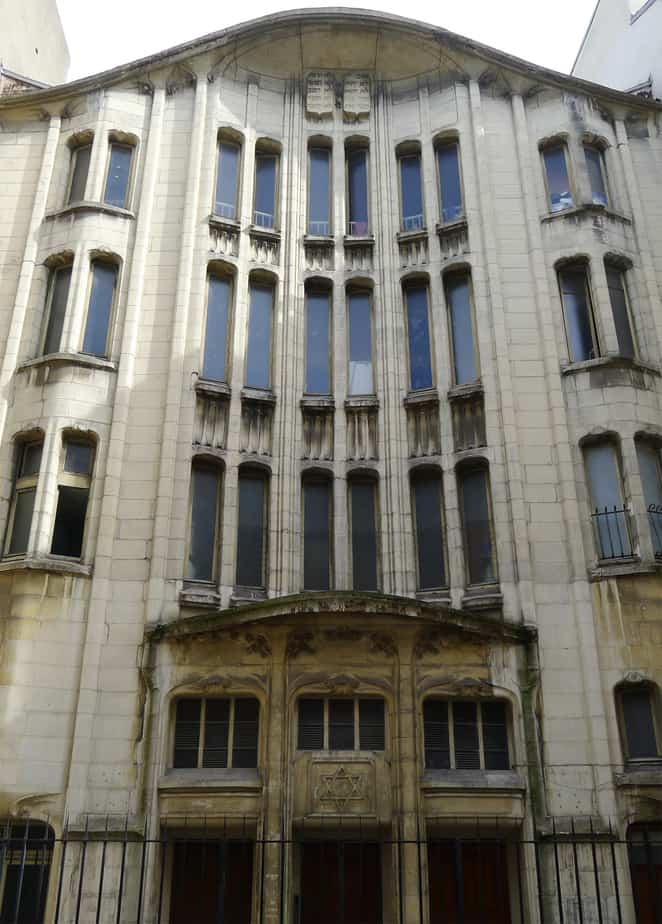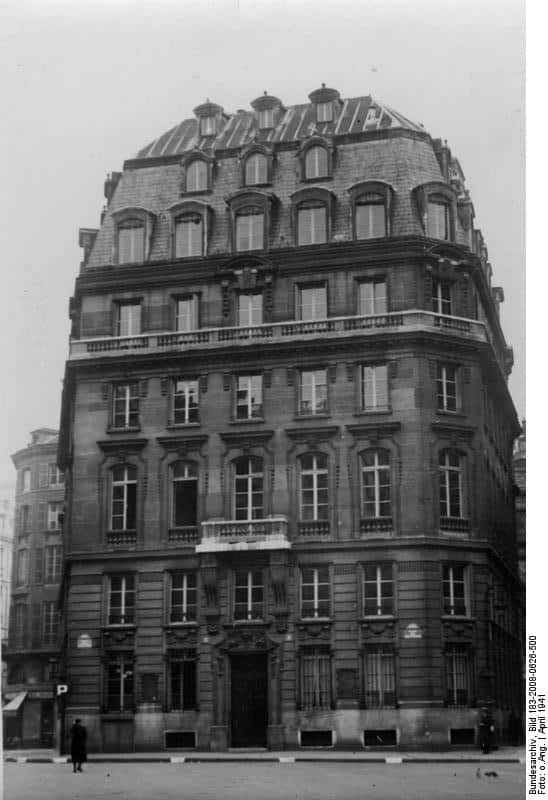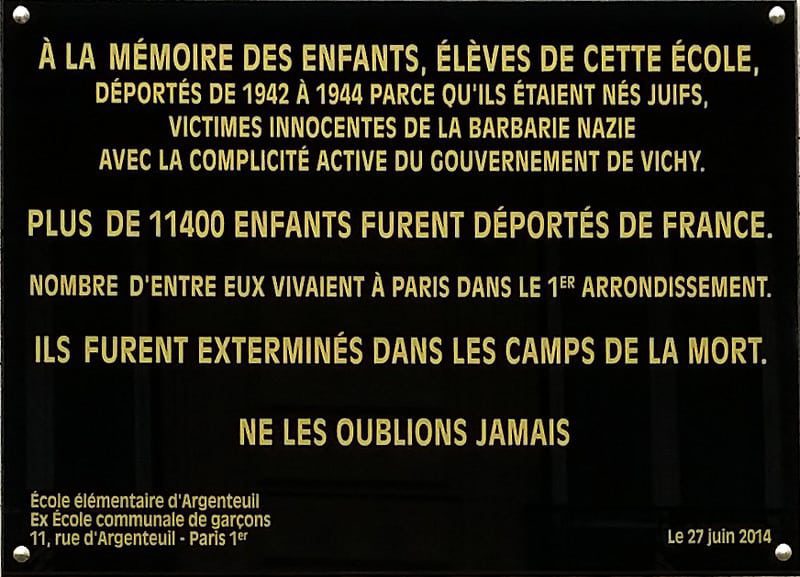A Brief History of Jews in Paris
The Jewish district of Paris, Le Marais, is one of the most popular attractions in Paris. Its diversity and its richness are the results of a long history. As in many European countries and cities, the history of the Jews includes some stories of persecutions, but not only.
Paris has been for a long time a refuge for several Jewish communities in the world. These Parisian Jews greatly contributed to the social and economic life of the city.
Let’s discover the stages of this history, with the people that marked them and the traces they left in today Paris!
Jews in the Middle Ages: A small persecuted community
The first source to mention a Jewish community in Paris dates back the 6th century, in the beginning of the Middle Ages. It is possible that some of them came before in the Antiquity. From the 6th century to the Revolution in 1789, the Jewish community remained under 1,000 inhabitants.
The Jews were the only non-Christian community of the country. They would do the jobs that the others did not want to take. For instance, the Christian religious authorities disapproved the credit: it was considered wrong to make money with money. Thus, it was the Jews who were the pawnbrokers. These professions brought money to some of them but also a lot of jealousy and many enemies.
Still today, in the Marais district, the Jewish district, a street reminds us of this past: the Rue des Ecouffes. In old French “Ecouffes” designated the kite, a bird of prey. It shows the bad reputation associated to this activity. Nobody remembers the original meaning of this word.
In the Middle Ages, the Jews were expelled several times of Paris and their goods were taken. Mostly, they were asked to return, as they were needed in the medieval economy. A common accusation was that the Jews were deicide, responsible for the death of the Christ.
It seems that it was a pretext to justify a widespread religious intolerance and a desire to cancel some debts owed to some Jews. At moments of tensions, like for the Great Plague of 1348, the Jews like the lepers were used as scapegoats. They were accused of poisoning the wells.
A reminder of this antisemitism can be seen directly on the portal of the cathedral of Notre-Dame. On both sides of the main door stands two allegories: “Ecclesia” who represents the Catholic church and “Synagoga” who represented Judaism. The contrast between the two is staggering with the snake that blinds Synagoga.
Improvements were brought by the Revolution and the Empire
In the 18th century, the philosophical movement of the Enlightenment fought religious intolerance and the persecution of religious minorities.
In 1787, the king Louis XVI gave an edict of tolerance to these minorities: Catholicism remained the state religion but Protestants and Jews obtained civil rights.
During the Revolution, some deputies like the Abbot Grégoire obtained the full citizenship for the French Jews. The deputy Clermont-Tonnerre said “We should give nothing for Jews as a nation, but everything for the Jews as individuals”.
This sentence sets the tone for the French Judaism that developed in the nineteenth century. The Jews were tacitly promised that they would be fully integrated to the nation under the condition of their cultural assimilation.
After some discussions with some rabbis, Napoleon created a hierarchical religious representation of the French Jews: 13 religious consistories including 1 for the Parisians.
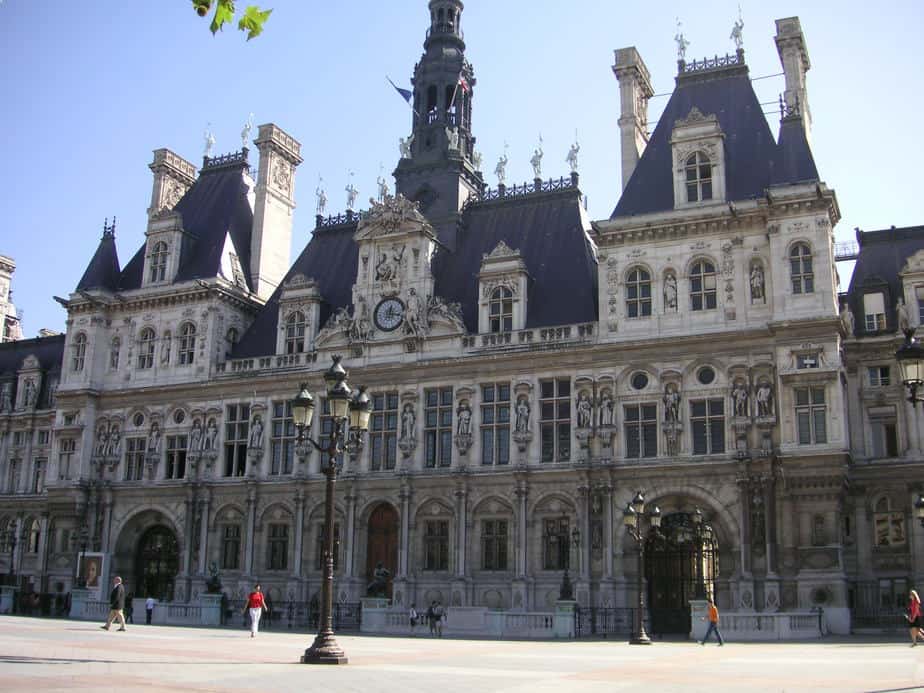
The city hall of Paris, where the status of the Jews was decided by Napoleon. Photo of Gail J. Cohen, sourced from Wikipedia
This way he could talk and negotiate to their representants like he did with Catholics representants.
This equality given to the Jews was something very uncommon in Europe. France was seen as a place of asylum for this community. That explained why the number of Jews grew in the 19th century, in France and especially in Paris.
The Jews in the 19th century: a mitigated situation
In the 19th century, the Jewish Parisian community was well integrated in the economy. Napoleon III, who ruled between 1852 and 1870, thanked them for their contribution with the building of the Grande Synagogue de Paris.
It is considered the second biggest synagogue in Europe. The architecture is a mixed between a neo-byzantine style and some inspiration from the French style of the middle of the 19th century (Style Second-Empire). Contrary to the tradition it is not looking at Jerusalem.
In 1871, after a war, Alsace was integrated into the new German state, against the will of the population. 40 000 Jews preferred to move in France where they expected a better treatment. Many of them settled in Paris, in the district of Le Marais. The synagogue 21 bis rue des Tournelles, in Le Marais, was built for them in 1876.
Then came the shock of the Dreyfus Affair.
To sum it up shortly, Alfred Dreyfus, a Jewish officer was accused of betrayal as some military plans were given to the German enemy. In 1894, he was sentenced to life imprisonment and sent to the labor camp of Cayenne in French Guyana.
Soon, it was revealed that the real traitor was another officer called Esterhazy. Some French military officials had created fake evidences in order to accuse Dreyfus. The Army refused a new trial and any acknowledgement of what happened.
The country was bitterly divided between the pro and anti-Dreyfus. Many right-wing parties and personalities supported the Army because they wanted the Army to remain strong. The condemnation of an innocent did not matter much in comparison to this issue and some definitely had prejudices against the Jews.
On the left many were scandalized by this injustice and considered human rights as more important than the honour of the Army.
Eventually, after two new trials and a press campaign marked by the famous “J’accuse” of Emile Zola, Dreyfus was rehabilitated in 1906.
Despite the victory, the Affair casts some doubts within the Jewish community about the possibility of their integration. Amid the Dreyfus Affair, the “Rue des Juifs” in Le Marais was renamed « Rue Ferdinand Duval” because the shops prefer their address not to be associated with the Jews.
It was on this occasion, in Paris, that the Austrian reporter Theodor Herzl, had the idea of a national homeland for the Jews. He thought that if the Jews could not be integrated in France, the country of human rights, they could never be integrated in Europe. His movement, Zionism, was supported by rich Parisians Jews like Edmond de Rothschild.
Today, historians have a balanced perspective on the Dreyfus Affair. On one hand it revealed an antisemitism in some large portions of the population. On the other hand, half of the country took the side of Dreyfus and mobilized for his exoneration. In many European countries, a Jew could never have become an officer in the Army and his accusation would not have created any fuss.
The Jews in the first half of the 20th century: from protection to persecution
In the beginning of the 20th century, Jews were persecuted in the pogroms in the Russian Empire, especially in what is now Poland. Many came to Paris, especially in Le Marais, in the middle of the older Parisian Jewish community.
These Jews from Eastern and Central Europe were called the Ashkenazi and they spoke Yiddish. They were more orthodox than the average Jewish French and wanted their own place of worship. On Rue Pavée they built their own private synagogue, Agoudas Hakehilos, opened in 1914 and still used today.
These Ashkenazi Jews became dominant within the Jewish community of Paris. You can still see nowadays many of the shops they opened like the pastries shop Finkelstajn and Kahn, and on Rue des Rosiers where you can find Strudel, Apfelstrudels and other specialties from eastern Europe.
After Hitler took the power in Germany in 1933, many German Jews came to France.
An example of these refugees: Menachel Mendel Schneerson. He fled Ukraine in 1917, Berlin in 1933 and taught in Paris at the 17 and 25 Rue des Rosiers in a place called the “Schule”. He is the founder of the modern Loubavitch movement made up of orthodox Jews. He managed to escape France in 1940 and moved to the States, eventually passing away in Brooklyn.
The sudden and unexpected defeat of France in 1940 brought a catastrophe to the Parisian Jews that did not have time to run away.
The Republic that has been welcoming to the Jews, was replaced by the Vichy Regime under the dictatorship of the Marechal Petain. The northern part of the country was occupied by German soldiers.
Petain and his extreme-right government offered to collaborate with Hitler, that is to “help him”, hoping that he would be merciful in exchange.
As early as October 1940, Petain started to persecute the Jews by excluding them from the national community. On the Petits-Pères plaza in the 2nd arrondissement, a special administration was settled to deal with them.
The majority of the French population did not approve these measures but antisemitic officials were in power. The Vichy regime agreed to participate in the preparation of the Holocaust, a decision made in Berlin.
In 1942, the extermination of the European Jewish population began. In July 1942, the first massive round-up called the “Vel’ d’Hiv” took 13 000 Jews, put them in a biking stadium, then a temporary camp in the eastern suburb of Drancy. From Drancy, trains led them to Auschwitz.
Today, on the façade of many buildings you can read the names or the numbers of people that were taken by the Gestapo or the French police.
France has the highest survival rate of any Nazi-occupied country: two-thirds of the French Jews survived.
This can be partly credited to the many “Righteous” that protected some Jews during the war. These Righteous are honored in one of the wall of the Shoah Memorial in a street renamed l’Allée des Justes (Alley of the Righteous).
An example is Joseph Migneret, teacher and director of the school of the Hospitalières Saint-Gervais in Le Marais. Depressed to see his Jewish pupils disappearing, he managed to contact the networks of the Resistance. He was able to give fake ID to some of his pupils and to hide others in his house.
However, in Paris, it was harder to hide and only half of the Jewish population survived. Some of them came back while others chose to move to Israel.
The Shoah Memorial opened in 1956 on the 17th of Geoffrey l’Asnier Street. Its goal is to commemorate the Holocaust and provide information and resources about what happened. There is another place of memory in the close suburb of Drancy, where the deported were kept before they were sent to Auschwitz.
Since the recent past, has the situation improved ?
The Jewish population of Paris knew another dramatic change after the decolonization of North Africa.
ManyJews called the Sephardim were settled for many centuries in the French colonies of Algeria, Tunisia and Marocco. They received the French nationality after 1870. Many of them chose to follow the French settlers when they evacuated North Africa and some of them came to Paris.
Today the majority of the Parisian Jews belong to the Sephardic culture. They have the reputation to have a “Mediterranean” culture, that is more extravert, and sometimes “bling bling”. A humoristic series of movies called “La vérité si je mens”, ie “The truth if I lie”, which depicts them met great success in France.
The district nicknamed “Le Sentier” in the 2nd arrondissement got a reputation to be the district of the rich Sephardic Jews working in the textile industry. Nowadays, they tend to be replaced in this district by some Chinese sellers.
The existence of close relationships between the Jews of France and Israël is the reason why so many falafel restaurants opened in Le Marais. There is a famous competition called “the War of the Falafel” between l’As du Falafel and his rival and neighbor le Mi-Va-Mi on the 32 and 23 Rue des Rosiers.
It seems that the Jews in Paris are well integrated socially and politically. Their presence and the food associated to them in some districts like Le Marais are part of the attraction of Paris.
However, it should be mentioned that some Jews don’t feel safe anymore in France.
We won’t go into details here because it is a very complicated and debated question that cannot be treated in a few lines. In short, there have been some murders, cemetary desecrations and anti-semitic graffitis that create an insecurity within the Jewish community, and sometimes cause the victims to leave the country.
If you want to know more about the situation of the Jews in Paris and in France, the best option is to come to meet and talk to them directly ! Many speak English and will welcome a respectful curiosity and openness to them.
Don’t forget to visit the Museum of Jewish Art and History whose rich collections will satisfy your curiosity.
The visit of the Jewish district of Le Marais is included in our free tour. You can also book a specific Jewish tour, in 90 min or 3h!
Planning a trip to Paris ? Get ready !
These are Amazon’s best-selling travel products that you may need for coming to Paris.
Bookstore
- The best travel book : Rick Steves – Paris 2023 – Learn more here
- Fodor’s Paris 2024 – Learn more here
Travel Gear
- Venture Pal Lightweight Backpack – Learn more here
- Samsonite Winfield 2 28″ Luggage – Learn more here
- Swig Savvy’s Stainless Steel Insulated Water Bottle – Learn more here
Check Amazon’s best-seller list for the most popular travel accessories. We sometimes read this list just to find out what new travel products people are buying.






